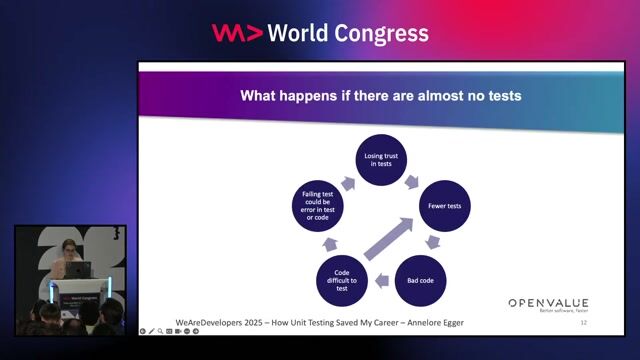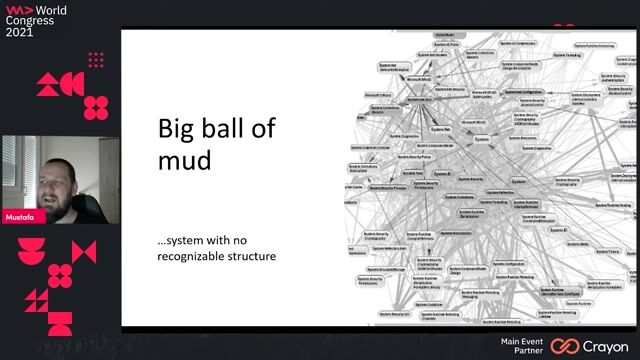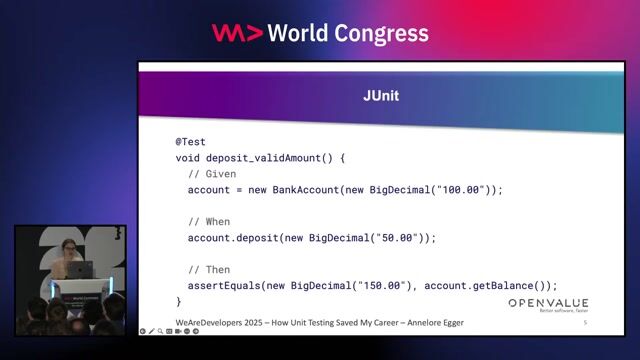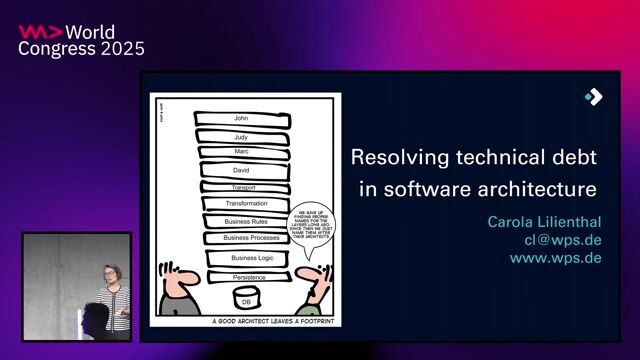Ryan Latta
How To Test A Ball of Mud
#1about 2 minutes
Defining the 'ball of mud' software problem
A 'ball of mud' codebase is too complex to understand and its changes have unpredictable results, requiring a different approach like testing to solve.
#2about 7 minutes
Using system tests to verify infrastructure stability
Simple system tests running frequently in CI can confirm infrastructure is operational, which is a critical first step before tackling code correctness.
#3about 4 minutes
Rebuilding testing skills with incremental unit tests
Start by adding two unit tests per work item to gradually build the team's testing skills and integrate testing into the development process.
#4about 3 minutes
Redefining the 'unit' in a complex codebase
The 'unit' in a unit test for a ball of mud is the smallest testable group of code, which reveals the actual system design, not an idealized one.
#5about 3 minutes
Weighing the risks and benefits of mocking
Mocking can ease the pain of dependencies but risks creating a shadow implementation; isolating dependencies by design is a more robust alternative.
#6about 3 minutes
Dealing with legacy tests and test dependencies
Old, failing tests should be deleted, and new tests must be independent to avoid creating a debugging nightmare where test order affects outcomes.
#7about 4 minutes
Strategies for ensuring test independence and speed
Enforce test independence by running tests in a random order and optimize speed by decoupling code from frameworks, not just through parallelization.
#8about 3 minutes
Adding smoke tests for critical application use cases
Once infrastructure and unit tests are in place, add smoke tests for critical use cases to verify high-level application correctness.
#9about 11 minutes
Conclusion and Q&A on advanced testing topics
The talk concludes by summarizing the need for a different approach to legacy code, followed by a Q&A on singletons, snapshot testing, and parameterized tests.
Related jobs
Jobs that call for the skills explored in this talk.
Matching moments

16:43 MIN
Practical strategies for testing legacy applications
Testing .NET applications a Tool box for every developer

15:43 MIN
Shifting focus from fixing the test to fixing the app
Fighting test flakiness with time machines

00:02 MIN
Why standard TDD fails in complex legacy code
How to TDD in legacy code

01:24 MIN
Identifying the common pains of software testing
Write tests you love, not hate

14:33 MIN
The vicious cycle of untestable legacy code
How Unit Testing Saved My Career

25:17 MIN
Preventing architectural decay and code structure issues
Antipatterns - nemesis of software development

44:20 MIN
Q&A on testing strategies and team adoption
Write tests you love, not hate

41:20 MIN
Summary of key principles for better testing
Write tests you love, not hate
Featured Partners
Related Videos
 43:07
43:07How not to test
Golo Roden
 28:12
28:12Your Testing Strategy is broken - lets fix it!
Luise Freese
 26:33
26:33How Unit Testing Saved My Career
Annelore Egger
 56:49
56:49Write tests you love, not hate
Jens Happe
 45:43
45:43How to TDD in legacy code
Gil Zilberfeld
 26:46
26:46Keep your code refactorable
Gerrit Stapper
 24:38
24:38Resolving technical debts in software architecture
Carola Lilienthal
 47:22
47:22Continuous testing - run automated tests for every change!
Christian Kühn
Related Articles
View all articles



From learning to earning
Jobs that call for the skills explored in this talk.

Test System and Release Engineer (m/w/d)
AKDB Anstalt für kommunale Datenverarbeitung in Bayern
München, Germany
Intermediate
Senior
JavaScript
Automated Testing


QA/Automation Tester (Senior)
Test Driven Solutions Ltd.
Glenrothes, United Kingdom
Remote
£42K
Senior
Java
Scala
JMeter
+10




Software Engineer in Test
UserTesting, Inc.
Edinburgh, United Kingdom
Intermediate
API
Ruby
Scrum
Python
Cypress
+7

Agile Tester
Valori
Intermediate
Scrum
DevOps
Agile Methodologies
Continuous Integration
Behavior-Driven Development
